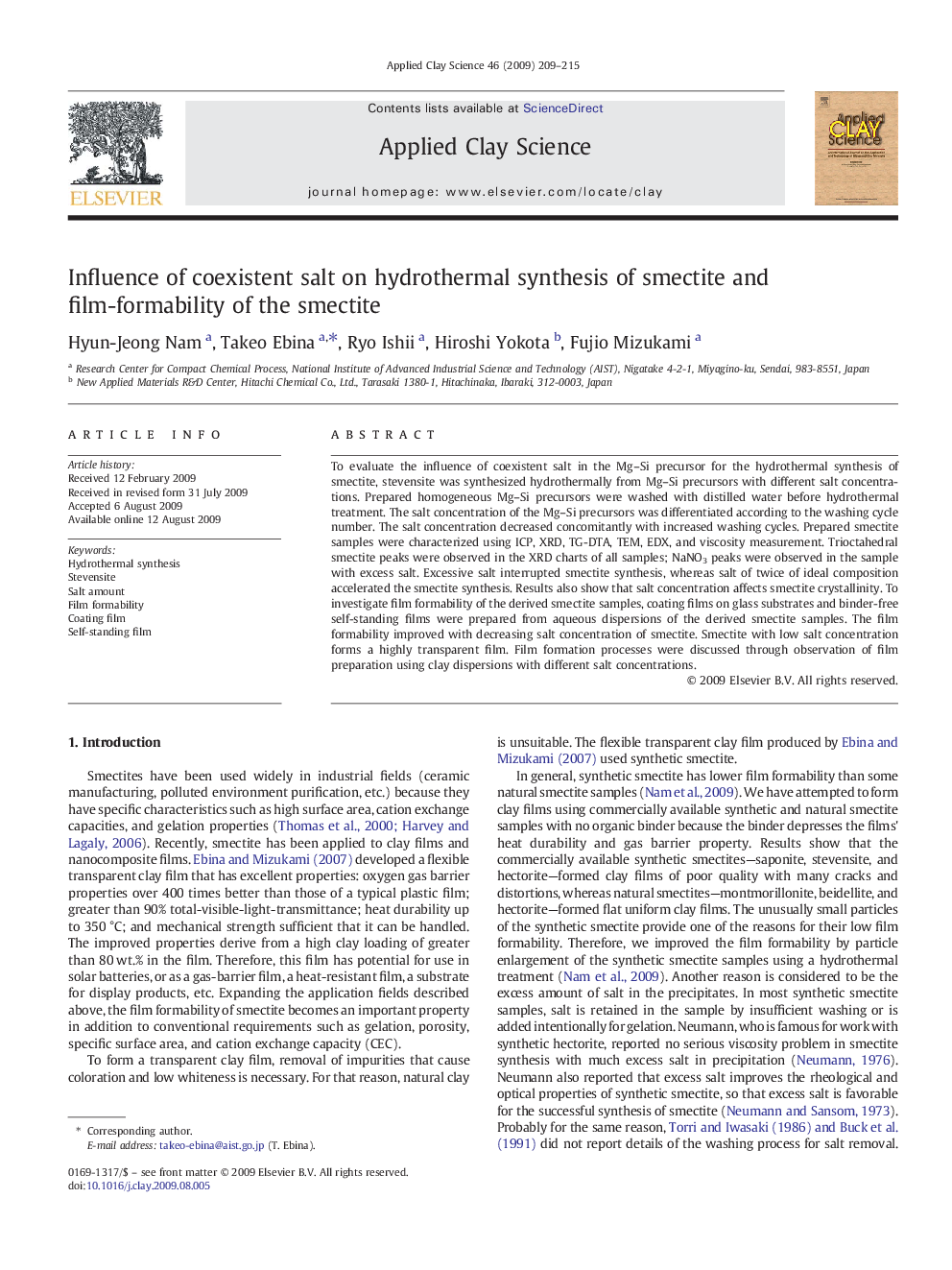| Article ID | Journal | Published Year | Pages | File Type |
|---|---|---|---|---|
| 1695907 | Applied Clay Science | 2009 | 7 Pages |
To evaluate the influence of coexistent salt in the Mg–Si precursor for the hydrothermal synthesis of smectite, stevensite was synthesized hydrothermally from Mg–Si precursors with different salt concentrations. Prepared homogeneous Mg–Si precursors were washed with distilled water before hydrothermal treatment. The salt concentration of the Mg–Si precursors was differentiated according to the washing cycle number. The salt concentration decreased concomitantly with increased washing cycles. Prepared smectite samples were characterized using ICP, XRD, TG-DTA, TEM, EDX, and viscosity measurement. Trioctahedral smectite peaks were observed in the XRD charts of all samples; NaNO3 peaks were observed in the sample with excess salt. Excessive salt interrupted smectite synthesis, whereas salt of twice of ideal composition accelerated the smectite synthesis. Results also show that salt concentration affects smectite crystallinity. To investigate film formability of the derived smectite samples, coating films on glass substrates and binder-free self-standing films were prepared from aqueous dispersions of the derived smectite samples. The film formability improved with decreasing salt concentration of smectite. Smectite with low salt concentration forms a highly transparent film. Film formation processes were discussed through observation of film preparation using clay dispersions with different salt concentrations.
